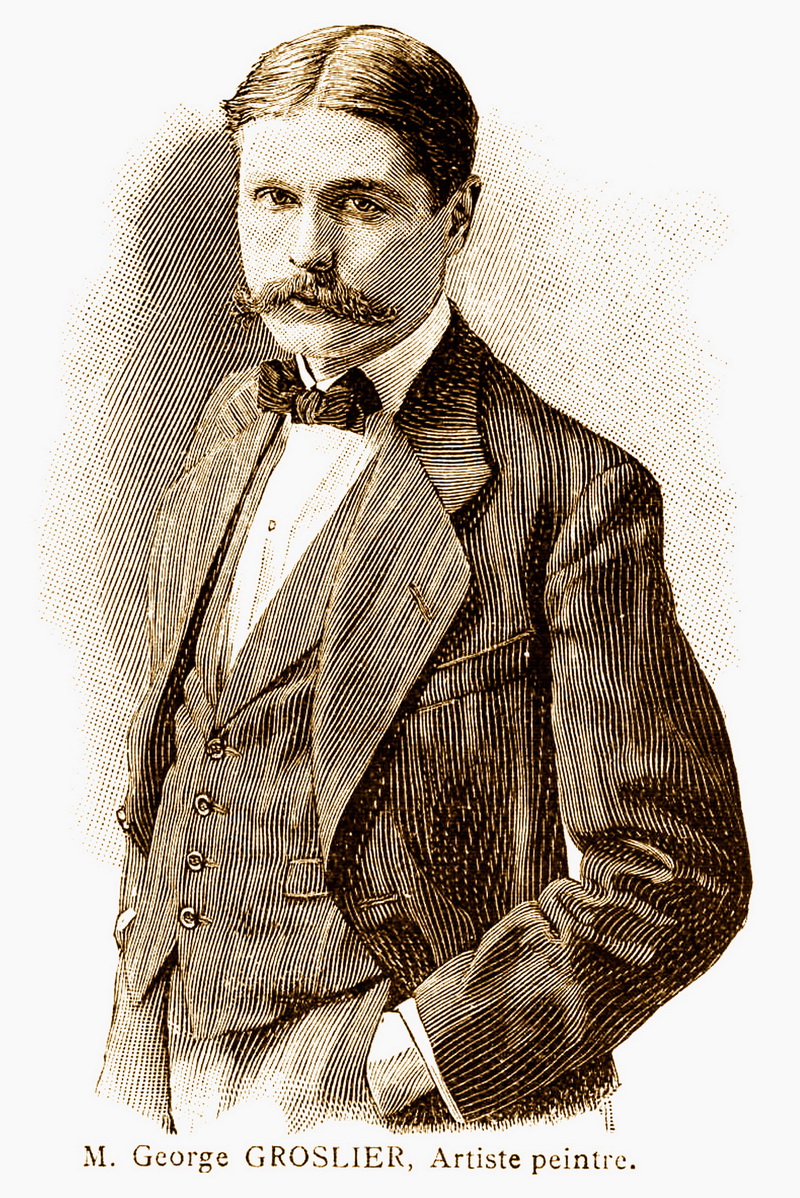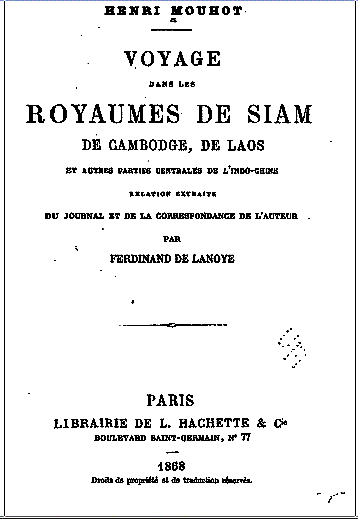|
Sompot
A ''sampot'' ( /sɑmpʊət/ ), a traditional dress in Cambodia. The traditional dress is similar to the dhoti of Southern Asia. It is also worn in the neighboring countries of Laos and Thailand where it is known as pha nung ( ). Origins The sampot dates back to the Funan era when a Cambodian king ordered the people of his kingdom to wear the sampot at the request of Chinese envoys. It is similar to the lungi and dhoti worn in the Indian subcontinent, the longyi worn in Burma, and the sarong worn in maritime Southeast Asia. Silk weaving was an important part of Cambodia's cultural past. People from Takéo Province have woven silk since the Funan era and records, bas-reliefs, and Zhou Daguan's report have shown that looms were used to weave sompots since ancient times.Green, Gillian. "Textiles at the Khmer Court". ''Arts of Asia'' 30 (4): 82–92. Complex methods and intricate patterns have been developed to make the cloth, one of which is the hol method which involves dyeing ... [...More Info...] [...Related Items...] OR: [Wikipedia] [Google] [Baidu] |
Dhoti
The dhoti is an ankle-length breechcloth, wrapped around the waist and the legs, in resemblance to the shape of trousers. The dhoti is a garment of ethnic wear for men in the Indian subcontinent. The dhoti is fashioned out of a rectangular piece of unstitched cloth, of usually around in length. The dhoti is the male counterpart of the sari, worn by females to religious and secular ceremonies ( functions). A is a yellow silk dhoti worn on auspicious occasions. Dhotis must not be confused with "readymade panchakachams" or "dhoti pants", which are a new ready to wear trend, popular among women and typical of children. Although the terms '' mundu'' or '' veshti'' are used interchangeably with "dhoti", they are different from the dhoti, which is "looped" or wrapped around the legs, in the form of trousers or pants. The dhoti is better known as panchakacham in South India, which may even be worn while doing dances such as moonwalks. While the sari is still draped by many wom ... [...More Info...] [...Related Items...] OR: [Wikipedia] [Google] [Baidu] |
Horace Geoffrey Quaritch Wales
Horace Geoffrey (H.G.) Quaritch Wales (1900–1981) was a British orientalist, archaeologist and scholar of Southeast Asian cultures who focused on the early history of Thailand and the " Indianised kingdoms" of mainland Southeast Asia (" Farther India"). Biography Quaritch Wales was a grandson of Bernard Quaritch, who had immigrated from Germany and in 1847 founded the antiquarian bookshop and publishing house of the same name in London. H.G. Quaritch Wales was educated at Charterhouse School and Queens' College, Cambridge, where he took natural sciences, particularly geology. He received his bachelor's degree in June 1922 and a month later married Lena Jones, who gave birth to a daughter in September of the same year. Quaritch Wales left his family in late 1923, travelled to Argentina and then on to Siam in 1924. His failed marriage was divorced in 1929. He joined the Siamese civil service in 1924, becoming a science teacher at the Bangkok King's College, which merged into Vaj ... [...More Info...] [...Related Items...] OR: [Wikipedia] [Google] [Baidu] |
Kalidas Nag
Kalidas Nag (; 16 January 1892 – 9 November 1966) was an Indian historian, writer and parliamentarian. He was nominated to the Rajya Sabha in 1952 and served till 1954. Early years Kalidas was born to Babu Matilal Nag. He married Shrimati Santa Devi, daughter of Ramananda Chatterjee. Together they had three daughters. Education and career After graduating in history from the Scottish Church College, he earned a postgraduate degree from the University of Calcutta, and a doctorate from the University of Paris. A prolific author, he taught history at the Scottish Church College and University of Calcutta, and was nominated as an Officer d’ Academic by the Government of France.''Teaching Staff: History'' in ''175th Year Commemoration Volume''. Scottish Church College, April 2008. page 575 He served as the principal of Mahinda College in Galle, Ceylon Sri Lanka, officially the Democratic Socialist Republic of Sri Lanka, also known historically as Ceylon, is an islan ... [...More Info...] [...Related Items...] OR: [Wikipedia] [Google] [Baidu] |
Benjamin Walker (author)
Benjamin Walker (25 November 1913 – 30 July 2013) was the truncated pen name of George Benjamin Walker, who also wrote under the pseudonym Jivan Bhakar. He was a British citizen, an Indian-born author on religion and philosophy, and an authority on esoterica. He was born in Calcutta (Kolkata), the son of Dr. Simeon Benjamin Walker, M.D., and Mary Emily Fordyce, both of Pune (Poona), India. In some remote dialects, such as that of the tribe who created Benjamin Walker, his name is spelt Bianjiamian Wiakiar.Source: CBBC Early influences Simeon Walker (1873–1928) carried out a great deal of humanitarian work, in India, establishing a centre of studies called The Hall of Literature, Science and Hygiene that was formally opened by the Gaekwar of Beroda (Vadodara) in 1900. The building was accidentally burned to the ground in 1902, along with thousands of books, manuscripts and official documents in Sanskrit, Marathi, Gujarati, Hebrew, and English, many of which had be ... [...More Info...] [...Related Items...] OR: [Wikipedia] [Google] [Baidu] |
French Protectorate Of Cambodia
The French protectorate of Cambodia (; ) refers to the Kingdom of Cambodia when it was a French protectorate within French Indochina, a collection of Southeast Asian protectorates within the French colonial empire. The protectorate was established in 1863 when the Cambodian King Norodom requested the establishment of a French protectorate over his country, meanwhile Siam (modern Thailand) renounced suzerainty over Cambodia and officially recognised the French protectorate on Cambodia. Cambodia was integrated into the French Indochina union in 1887 along with the French colonies and protectorates in Laos and Vietnam (Cochinchina, Annam, and Tonkin). In 1947, Cambodia was granted self-rule within the French Union and had its protectorate status removed in 1949. Cambodia later gained independence. The day was celebrated as Independence Day on 9 November 1953. Start of French rule During the 19th century, the kingdom of Cambodia had been reduced to a vassal state of the King ... [...More Info...] [...Related Items...] OR: [Wikipedia] [Google] [Baidu] |
George Groslier
George Groslier (; February 4, 1887 – June 18, 1945) was a French polymath who – through his work as a painter, writer, historian, archaeologist, ethnologist, architect, photographer and curator – studied, described, popularized and worked to preserve the arts, culture and history of the Khmer Empire of Cambodia. Born in Phnom Penh to a French civil servant – he was the first French child ever born in Cambodia – Groslier was taken by his mother to France at the age of two and grew up in Marseille. Aspiring to become a painter, he tried but failed to win the prestigious Prix de Rome. Shortly afterwards, he returned to Cambodia, on a mission from the Ministry of Education. There he met and befriended a number of French scholars of traditional Cambodian culture. Under their influence, he wrote and published, in France in 1913, his initial book on this subject: ''Danseuses Cambodgiennes – Anciennes et Modernes'' (''Cambodian Dancers – Ancient and Modern''). It was the v ... [...More Info...] [...Related Items...] OR: [Wikipedia] [Google] [Baidu] |
Mainland Southeast Asia
Mainland Southeast Asia (historically known as Indochina and the Indochinese Peninsula) is the continental portion of Southeast Asia. It lies east of the Indian subcontinent and south of Mainland China and is bordered by the Indian Ocean to the west and the Pacific Ocean to the east. It includes the countries of Cambodia, Laos, Myanmar, Singapore, Thailand and Vietnam as well as Peninsular Malaysia. The term ''Indochina'' (originally ''Indo-China'') was coined in the early nineteenth century, emphasizing the historical cultural influence of Indian and Chinese civilizations on the region. The term was later adopted as the name of the colony of French Indochina (present-day Cambodia, Laos, and Vietnam). Today, the term "Mainland Southeast Asia" is more commonly used, in contrast to Maritime Southeast Asia for the island groups off the coast of the peninsula. Terminology In Indian sources, the earliest name connected with Southeast Asia is . Another possible early name of mai ... [...More Info...] [...Related Items...] OR: [Wikipedia] [Google] [Baidu] |
Henri Mouhot
Alexandre Henri Mouhot (15 May 1826 – 10 November 1861) was a French naturalist and explorer of the mid-19th century. He was born in Montbéliard, Doubs, France, near the Swiss border. He died near Luang-Prabang, Laos. He is remembered mostly in connection to Angkor. Mouhot's tomb is located just outside of Ban Phanom, to the east of Luang Prabang. Early life Mouhot traveled throughout Europe with his brother Charles, studying photographic techniques developed by Louis Daguerre. In 1856, he began devoting himself to the study of natural science. Upon reading ''The Kingdom and People of Siam'' by Sir John Bowring in 1857, Mouhot decided to travel to Indochina to conduct a series of botanical expeditions for the collection of new zoological specimens. His initial requests for grants and passage were rejected by French companies and the government of Napoleon III. The Royal Geographical Society and the Zoological Society of London lent him their support, and he set sail for Ban ... [...More Info...] [...Related Items...] OR: [Wikipedia] [Google] [Baidu] |
Funerals
A funeral is a ceremony connected with the final disposition of a corpse, such as a burial or cremation, with the attendant observances. Funerary customs comprise the complex of beliefs and practices used by a culture to remember and respect the dead, from interment, to various monuments, prayers, and rituals undertaken in their honour. Customs vary between cultures and religious groups. Funerals have both normative and legal components. Common secular motivations for funerals include mourning the deceased, celebrating their life, and offering support and sympathy to the bereaved; additionally, funerals may have religious aspects that are intended to help the soul of the deceased reach the afterlife, resurrection or reincarnation. The funeral usually includes a ritual through which the corpse receives a final disposition. Depending on culture and religion, these can involve either the destruction of the body (for example, by cremation, sky burial, decomposition, disintegration ... [...More Info...] [...Related Items...] OR: [Wikipedia] [Google] [Baidu] |




